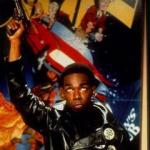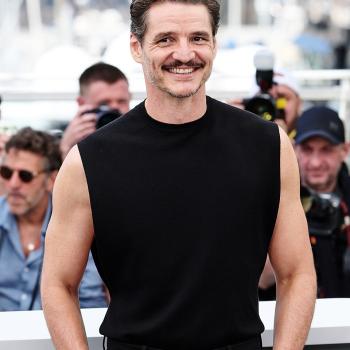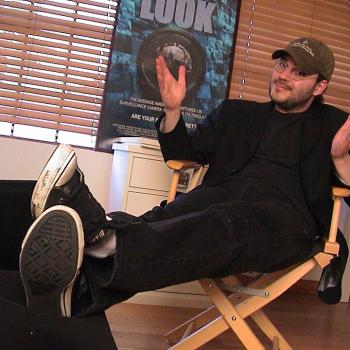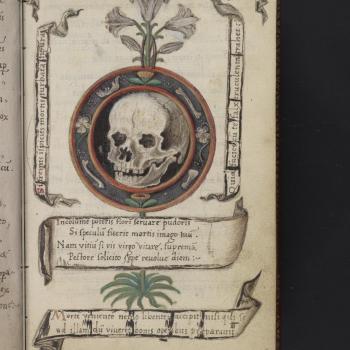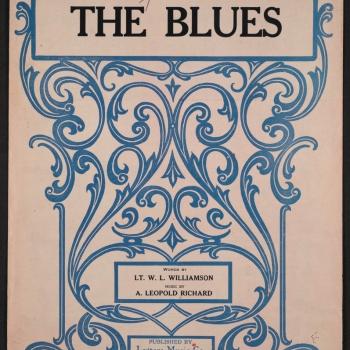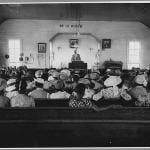
I’m in a peculiar position. I left New Jersey for college (went all the way to New England, I did), studied abroad in the UK, lived in Germany on-and-off, traveled across Europe, and, even during my homecoming, came back to do my PhD at a university that—as far as most Jersey residents are concerned—isn’t really in New Jersey. And yet here I am. I live in the house where I grew up, several degrees stronger, a lot poorer, married, navigating the unwritten codes of non-development, pre-Levittown suburbia. Last year a man castigated me for walking my dog on his lawn (there was no sidewalk, and it was a busy road). I couldn’t get a word in edgewise (my inner Jersey having been muted by years away and a Southern wife). He just kept shouting: “ON MY LAWN!” “ON MY LAWN!” like some one-off character from Curb Your Enthusiasm. A few weeks later a woman who looked like (to steal a line from Warren Zevon) “something Death brought with him in his suitcase” sternly warned me (bony finger and all—I mean what is this, a cartoon?) not to let my dog pee on her bushes; of course, he was nowhere near them. Then there’s the constant barrage of life advice, the comments, the gossip. I haven’t learned all the rules. These are my people and they aren’t. I am proud and I am out of place.
I am a non-townie townie, one who has returned, the Prodigal Son to my loyal small-town New Jersey brethren. Dare I say there is only one director who has captured the spirit of the townie on film—movie after movie (and it doesn’t hurt that he is from, and his films are largely set in, New Jersey). I am talking about, of course, that man of contradictions—the vegan hockey fanatic, the Catholic heretic, the weed-smoking romantic scold: Kevin Smith.
His breakthrough, Clerks (1994) follows two twenty-something loser clerks, Dante (Brian O’Halloran) and Randal (Jeff Anderson) over the course of a day; their problems are ones I’ve heard a thousand times, even down to the school names. Some of their classmates from Henry Hudson Regional are off to bigger and better things. Dante’s old girlfriend is off at some fancy liberal arts school; his new one moved from Montclair State to Monmouth (two prominent NJ public universities) to be closer to him (and, of course, to slyly-not-so-slyly coax him into getting his degree). She brings him lasagna at work and he closes the convenience store to play roller hockey on the roof. Dante and Randal battle over whether life is about fighting for what you can have or enjoying what you do, the rat race or the familiarity of home (I could almost hear the Ska and Pop Punk breaking through as I typed that out: “A boring life in a boring town, / In the same old crowd / And I used to say that I’d never stay, /But I’m rotting here today”). Jay (Jason Mewes) and Silent Bob (Kevin Smith) sell weed outside the stores and play the role of demented Greek chorus, that is, if the Ancient Greeks spoke New Jersey dialect.
Clerks also initiated the so-called View Askewniverse, the world in which most of Smith’s most famous films take place. He seems to have not realized this was what he was doing in Mallrats (1995), since he casts Jason Lee and Ben Affleck (among others) in roles that don’t carry over into his next, Chasing Amy (1997). Even though it stands apart (and is the weakest of his early movies), Mallrats continues his valorization of the hometown loser. Brodie (Jason Lee) is a comic-loving basement dweller who’s afraid to introduce his girlfriend to his mom (and who sneaks her in through his low-lying window at night). She, of course, leaves him for studly mall men’s fashion store manager, Shannon (Ben Affleck). Brodie’s friend, T.S. Quint (Jeremy London) accidentally mucks up a grant the governor of New Jersey was set to give his girlfriend’s dad at Monmouth University. And so, we follow the two losers through a day at the mall as they plot their revenge and redemption. Jay and Silent Bob are there (because, of course they are). But notice the horizons here: young adult relationships, mall managers and comic geeks, local public universities and mall hangouts (though it breaks my heart that the movie was filmed at a mall in Minnesota of all places—yeesh).
Smith’s little world finds its footing with Chasing Amy, which is probably the best movie he’s ever made (or will make—sorry, Kev). I haven’t the time nor the space here to give the full run-down on one of my favorite romantic comedies, but it manages to explore topics like identity (on any number of fronts), repressed homosexuality, and the construction of masculinity, all while being filled with fart and genitalia jokes. The action is set between Red Bank, NJ (right near where Clerks is set and where Smith and all his original collaborators were more-or-less from) and New York City. For those who don’t know, we simple bridge-and-tunnel folks love gettin’ in uh famuhlee veehcles ‘n goin’ fuh uh ride ta da cidy. That or we catch the train. It’s where we go as teenagers for concerts or to get in trouble. It’s where many of our parents or friends’ parents work. We all pray toward it, bask in its light. And—rightly—it hates us. Chasing Amy captures this oh-so-well. Holden McNeil (Ben Affleck) and Banky Edwards (Jason Lee) are two comic-book writers based in Red Bank who have made a killing with superhero characters based on Jay and Silent Bob called Bluntman and Chronic. One of them falls in love with a hometown girl now living in New York (whose friends mock her for being involved with someone from Jersey).
There’s much more to be said about Chasing Amy, but it solidifies Smith’s role as the townie filmmaker by initiating a process of constant cross-reference. Alyssa Jones (Joey Lauren Adams), the love interest from CA, is mentioned by a character named Rick Derris (Ernest O’Donnell) in Clerks. Similarly, Derris, though he never appears in the later film is a major character, whose role in Alyssa’s past casts a shadow over her and Holden’s burgeoning relationship. Similarly, in Chasing Amy, while Banky and Alyssa, are sharing, uh, war stories, the former mentions an encounter with Brandi Svenning (Claire Forlani), which gets broken up by her father (Michael Rooker). Brandi is T.S.’s love interest in Mallrats; her dad is the primary antagonist. Alyssa’s hometown best friend, we learn, is Dante’s ex-girlfriend from Clerks, Caitlin Bree (Lisa Spoonauer). It goes on and on.
This is, of course, just how small towns operate. Everyone knows everyone else, especially from their local high school. Here in New Jersey, we seem to take this a step further (or at least, my wife tells me this isn’t standard practice everywhere else)—we constantly refer to people by their full names when referencing them. “Oh, you know Caitlin Bree?” or “You did what with Rick Derris?”
While that may appeal to me because of who I am and where I’m from, I don’t think that’s what makes the Townieverse so special. Instead, what should fascinate us about Smith’s efforts is how well they capture the lives of so many. These days, most media people are the children of the wealthy or of other media people (or both). Most small towns (if even shown) are LA-people composites of hamlets, or the distant memories of those who ran away from Cornfield, Iowa to be a star. But who else has shown us such a truthfully childish, confused, unsettled, uncertain, and just plain bizarre portrait of small-town tedium and discontent? Who has better captured the love and hate so many would-be ambitious people trapped by the exigencies of class bear in their hearts? It shouldn’t surprise us that it took the son of a postal worker and a homemaker, a Catholic boy from Leonardo, NJ, to score one for the little guy.



